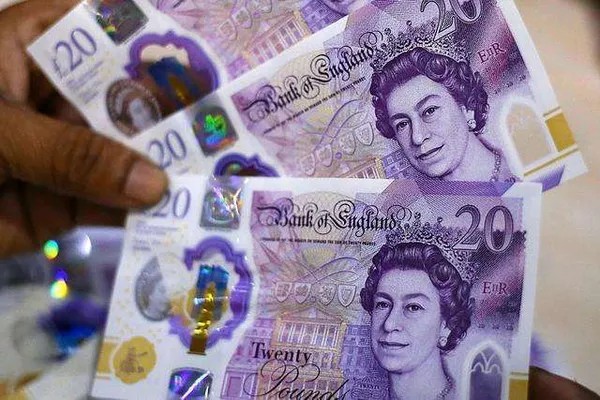On February 15, 1971, the United Kingdom marked a significant milestone in its monetary history with the implementation of decimalization, a transformative process that forever changed the way Britons counted their currency. This article takes an in-depth look at how decimalization affected the British pound, tracing the origins of the transition, its impact on daily life, and the enduring legacy of this historic event.
Pre-Decimalization: Pounds, Shillings, and Pence
Prior to decimalization, the United Kingdom employed a complex and archaic system of currency known as pounds, shillings, and pence, often abbreviated as “£sd.” This system was deeply rooted in British history, dating back to the Roman occupation and evolving over centuries.
Pound (£): The pound was the primary unit of currency and was further divided into 20 shillings.
Shilling (s): The shilling was the intermediary unit, with 12 shillings in a pound. Each shilling was divided into 12 pence.
Penny (d): The penny, the smallest unit of currency, was abbreviated as “d” and was equivalent to 1/240th of a pound.
This intricate system, while historic, posed numerous challenges. Calculations were often cumbersome, and tourists, foreign investors, and newcomers to the UK found it perplexing. As the world modernized, the “£sd” system appeared increasingly outdated.
Origins of Decimalization
The seeds of decimalization were sown in the mid-20th century when the need for a more straightforward and efficient currency system became evident. The UK’s former Chancellor of the Exchequer, Harold Wilson, appointed a committee in 1961 to explore the possibility of adopting a decimal currency. The committee’s recommendations formed the basis for the eventual transition.
Decimal Currency Act of 1969
In preparation for decimalization, the Decimal Currency Act of 1969 was passed, setting the stage for the comprehensive currency reform. The Act established the new decimal currency system, with one pound equaling 100 new pence. This system retained the pound as the primary unit while simplifying subunits.
The Transition: Decimal Day (February 15, 1971)
The much-anticipated Decimal Day arrived on February 15, 1971. This momentous occasion marked the official switch from the “£sd” system to the new decimal system. The key changes included:
Pound Remained Unchanged: The pound itself retained its value and designation.
Shillings and Pence: Shillings were discontinued, and the new penny (plural: pence) became the primary subunit. There were 100 pence in one pound.
New Coins and Banknotes: A range of new coins was introduced, including the ½p, 1p, 2p, 5p, 10p, and 50p coins. New banknotes reflecting the decimal currency system were issued.
Impact on Daily Life and Business
Decimalization was a monumental shift that touched every aspect of daily life and business in the UK:
Consumer Adaptation: Britons had to adjust to a new way of thinking about money. Prices were displayed in both the old and new systems to facilitate the transition.
Retail and Banking: Retailers and banks had to convert their systems and educate their employees and customers. Cash registers and accounting practices were updated.
Education: Schools played a crucial role in preparing the younger generation for the change. Students were taught the new decimal system, ensuring they could navigate the modern currency landscape.
Minting and Printing: The Royal Mint and the Bank of England had the monumental task of producing new coins and banknotes in sufficient quantities to replace the old currency.
Public Information Campaigns: Extensive public information campaigns were launched to inform citizens about the transition. The famous “D-Day” campaign aimed to simplify the message: “Don’t forget – D-Day is February 15th.”
Benefits of Decimalization
Decimalization brought several benefits to the UK:
Simplicity: The new system was easier to understand and use, making everyday transactions more straightforward.
International Compatibility: Decimal currency aligned the UK with the international standard, simplifying trade and financial interactions with other nations.
Modernization: The transition signaled the UK’s commitment to modernization and economic progress.
Efficiency: Calculations and financial record-keeping became more efficient, benefiting businesses and individuals alike.
Legacy and Continued Use of the Decimal System
Decimalization has left a lasting legacy in the UK. The decimal currency system is firmly embedded in everyday life, with generations of Britons growing up accustomed to counting in tens and hundreds. Today, the pound remains a stable and globally recognized currency, valued not only for its historical significance but also for its ease of use in the modern world.
Conclusion
The decimalization of the British pound in 1971 was a historic and transformative moment in the nation’s monetary history. It replaced the centuries-old “£sd” system with a more practical and efficient decimal currency system. While the transition was met with challenges and required adjustment, it ultimately simplified daily life, modernized financial practices, and positioned the UK for international economic interactions. Decimalization stands as a testament to the country’s ability to adapt and evolve in the face of changing times, ensuring that the pound remains a symbol of stability and progress in the modern world.


